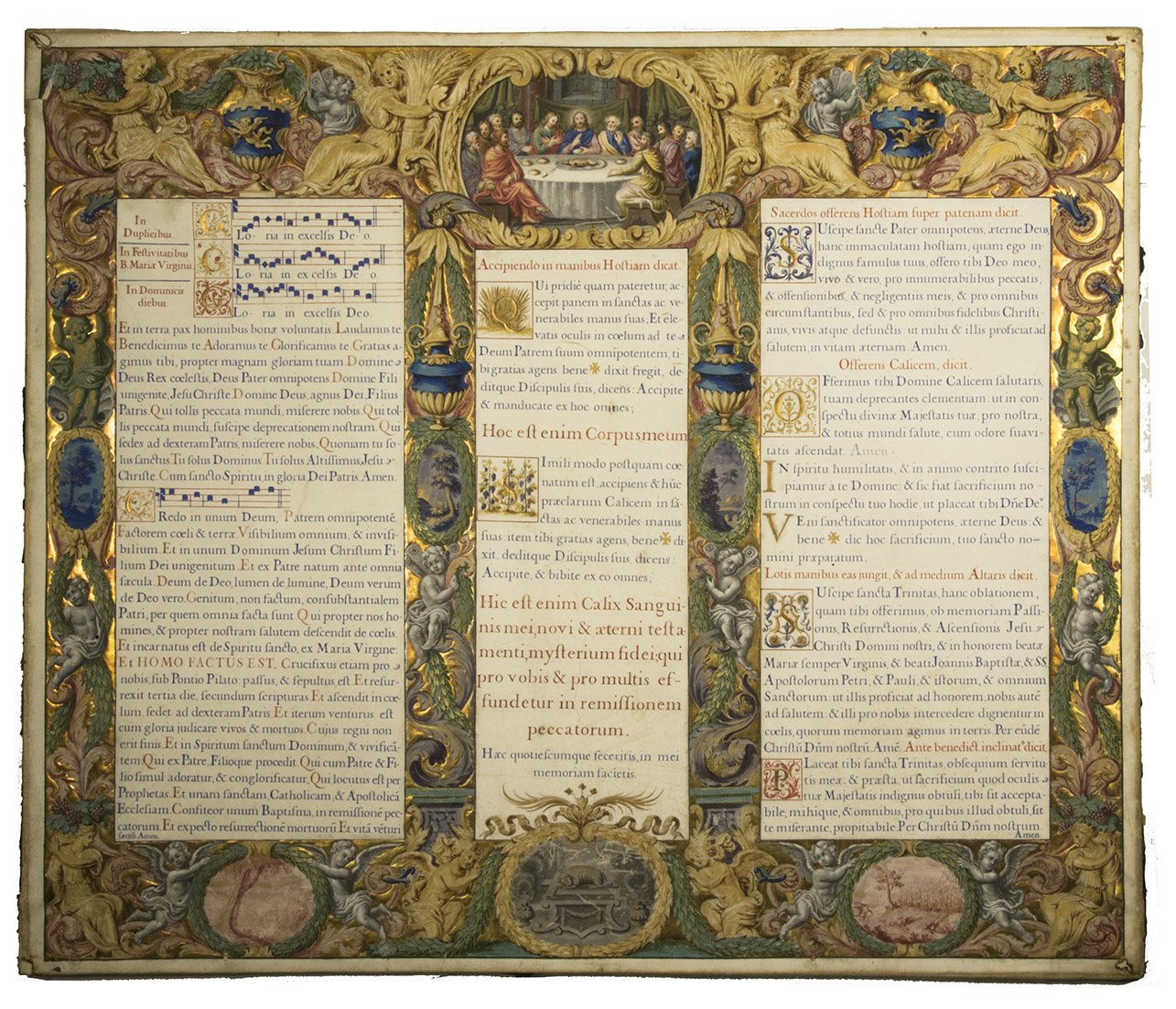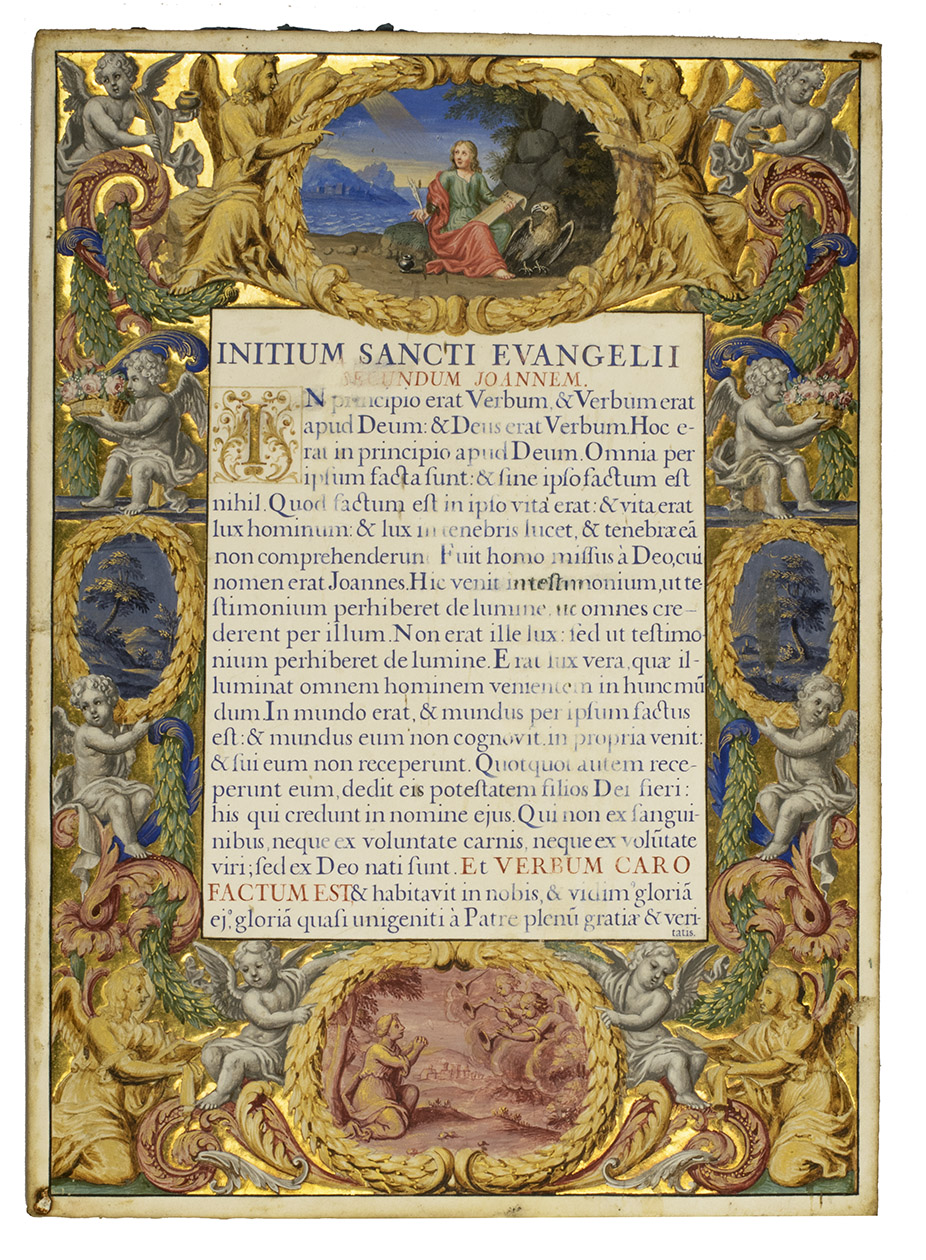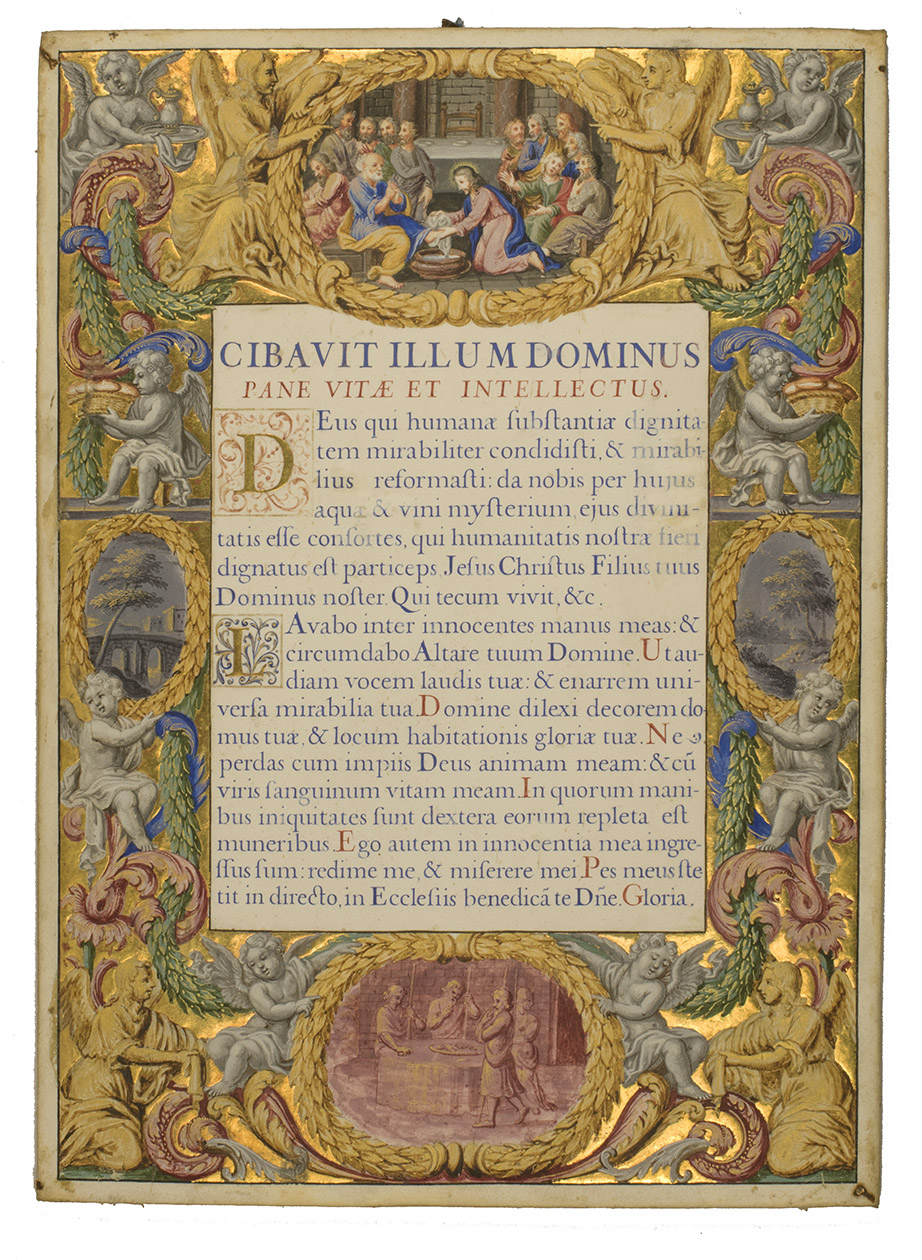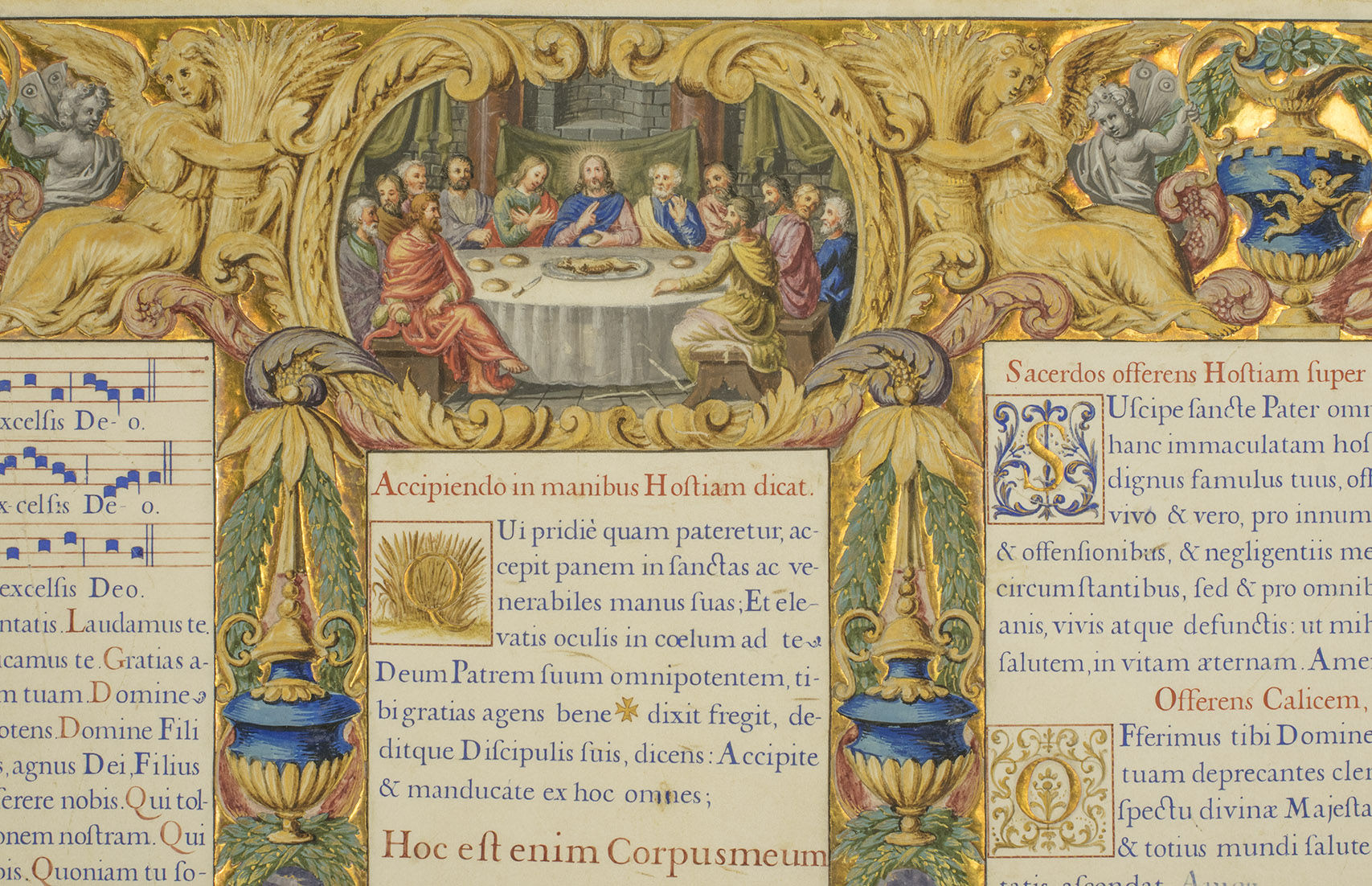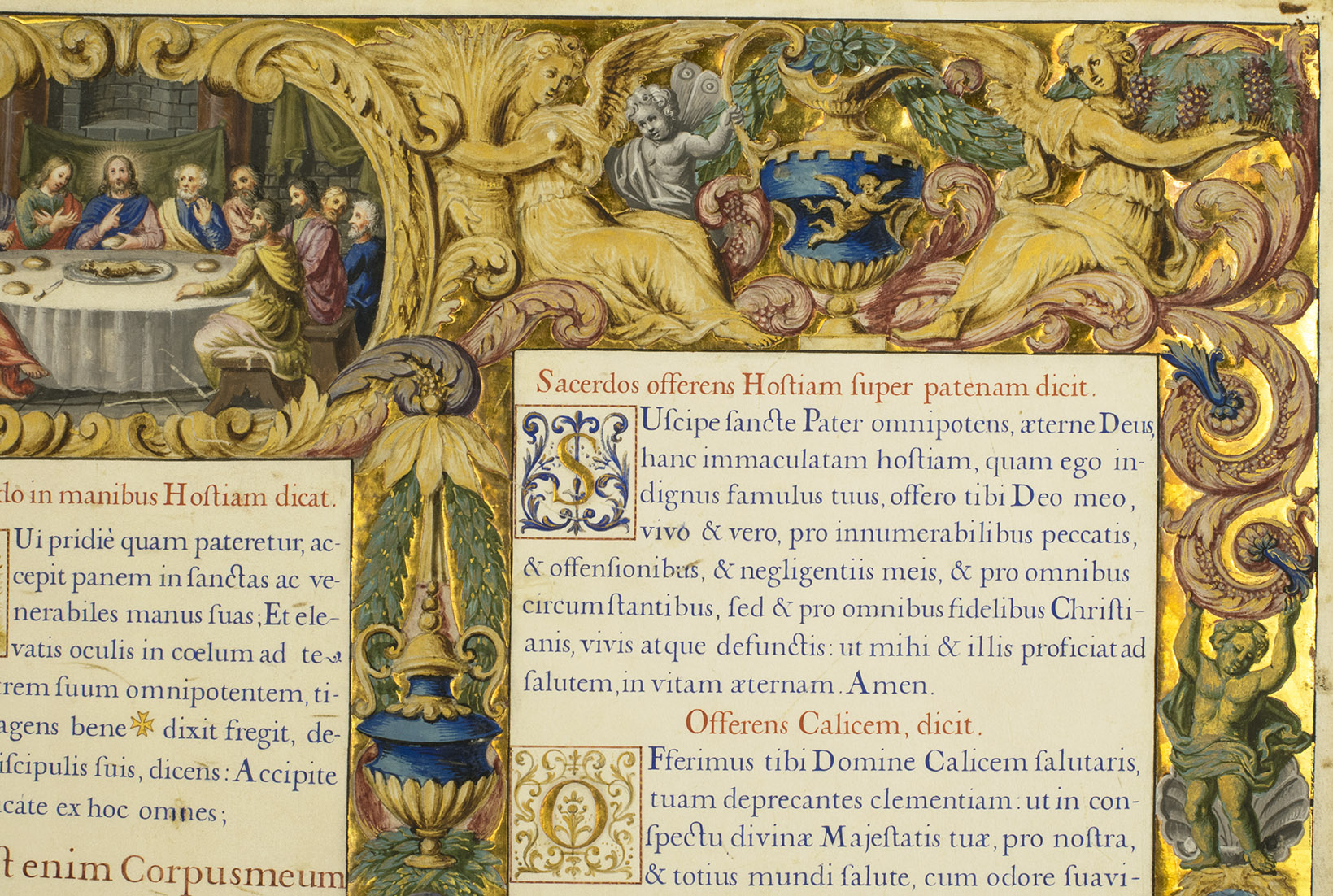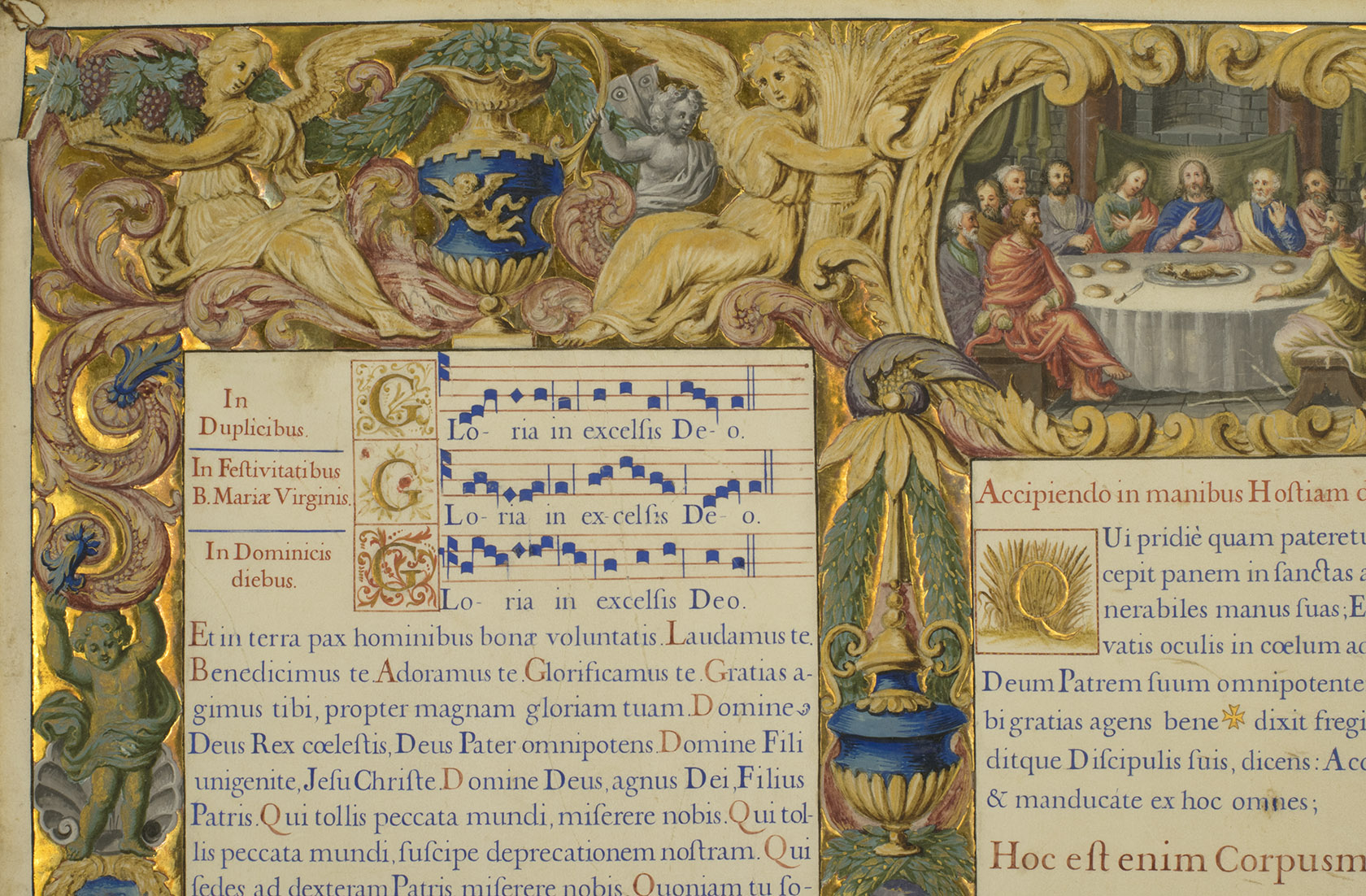[ILLUMINATED MANUSCRIPT - ALTAR CANON].
Accipiendo in manibus hostiam dicat[!].... Initium Sancti Evangelii secundum Joannem. ... Cibavit illum dominus pane vitæ et intellectus.
[Belgium?], [ca. 1790?]. Three illuminated manuscript wall panels in matching style, forming a three-part altar canon lettered in blue and red ink on parchment (one 47.5 x 57 cm & two 31 x 22 cm; image sizes 46 x 54.5 cm & 29.5 x 21 cm), the larger stretched over a wooden frame and each of the smaller two over a wooden panel. All three panels meticulously and finely lettered in the style of roman printing types with 1 line in italic capitals, all 12 initials and some of their decoration in gold. All three panels richly illuminated around and between the text blocks with a gold background and extensive gold highlights, the illumination including decorated cartouches. The principal scenes at the head (miniatures in a wide variety of colours) show the Last Supper, Saint John the Evangelist and Christ washing his apostles feet; the central scenes at the foot (ink and ink wash drawings, probably emblematic, that on the large panel in grey and those on the small panels in red) show a lamb and cross on an altar, 4 standing figures with long staffs around a table with a platter (of bread?: some of the figures are eating something) and herald angels before a kneeling figure (it doesnt look like a shepherd or the Virgin Mary).
€ 16,000
A three-part, beautifully illuminated manuscript altar canon, in Latin, that hung in a Catholic Church for devotional use, displaying an exquisite and spectacular level of skill in the lettering and the illumination, both with an extensive use of gold. The central text block of the large panel, directly below the miniature showing the last supper, contains texts for the eucharist (the Elevando oblatam and Levando calicem). The two text blocks flanking it contain (on the left) the Gloria and Credo from the Latin mass and (on the right) four offertory prayers from the Roman rite. The first prayer, under the rubric "Sacerdos offerens hostiam super patenam dicit." is an offertory prayer concerning bread, first found in the prayerbook of the Holy Roman Emperor Charles the Bald, compiled in the years 875 to 877. The second prayer begins with an offer of wine and goes on to offer ones own self. The third prayer again concerns the eucharist and the fourth expresses the hope that the humble offer will be accepted and bring favour to those for whom it is made.
While this three-part altar canon with its miniatures, richly decorated borders with a generous use of gold, and text with plainchant music and decorated initials certainly alludes to Mediaeval and Renaissance illuminated manuscripts, it reinterprets them with exuberant rococo decorative elements from the second half of the 18th century, a period that saw an awakened interest in the past. Not only the decoration, but also the lettering fits this double bill. Rather than turning to the gothic lettering styles of most Mediaeval liturgical manuscripts, it alludes to a highly sophisticated style of humanistic lettering introduced in the Italian Renaissance in the 1450s, which served as models for the first roman printing types ca. 1470. Yet in the present manuscript the lettering clearly shows direct influences from roman printing types in the new style introduced by Baskerville in the 1750s and many others following him to the end of the century. In spite of its allusions to the past, the lettering shows the modern distinction between the capital U & V and I & J, and many letters show the teardrop terminals that arose under the influence of pointed pen lettering. Indeed, the capital J, which doesnt descend below the baseline and takes the teardrop terminal almost to the ball form that was to triumph around 1800, suggests that the present manuscript altar canon dates from the end of the 18th century.
All three panels are backed with (early 19th-century?) blue paper, but in the two small panels, some gaps in the backing paper reveal printed waste paper underneath, set in an 18th-century roman type (visible in mirror image). Unfortunately we can see only pieces of a few words, but it appears to be French (we can make out soit po[ur?]). If more can be seen, it might help determine where the panels were first installed. With a 3 cm tear across the upper left corner of the large panel, slightly affecting only a small bit of the border decoration, some scratches around the head of the cartouche at the foot of the large panel, the first half of the word "secumdum" in the heading of the John the Evangelist panel slightly rubbed and a few tiny marginal defects, but still in very good condition, most of the lettering and decoration fine. A stunning piece of liturgical art executed with unusual skill.
Related Subjects:
